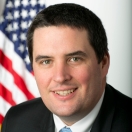
As the President points out in this video, our government doesn’t need a website dedicated to foresters who play the fiddle. We also don’t need multiple sites dealing with invasive plants (here and here). And I‘m pretty sure the website dedicated to the Centennial of Flight can come down... particularly since the Centennial was in 2003.
As President Obama has said, we can’t win the future with a government of the past. How our government uses the internet to communicate and deliver services is an obvious and critical part of this modernization effort.
Today, there are nearly 2,000 top-level federal .gov domains (this means a top-level url, [WEBSITENAME].gov, that links to a distinct website). This includes WhiteHouse.gov, as well as others like USDA.gov, USASpending.gov, NOAA.gov and USA.gov. Under many of these domains are smaller sub-sites and microsites resulting in an estimated 24,000 websites of varying purpose, design, navigation, usability, and accessibility.
While many government websites each deliver value to the taxpayer through easy-to-use services and information, an overall online landscape of literally thousands of websites – each focusing on a specific topic or organization – can create confusion and inefficiency.
In addition to confusing the public, duplicate and unnecessary websites also waste money. And while the costs for some of these websites may be relatively small, as President Obama also said in the video, "No amount of waste is acceptable. Not when it's your money, not at a time when so many families are already cutting back."
So the federal government will do more with less, improving how it delivers information and services to the public by reducing the number of websites it maintains. To help drive this change we've set a specific goal that over the next year, we’ll get rid of at least half of them.
As one of the first steps of the Campaign to Cut Waste and as part of an OMB memorandum to improve customer service, we’ve taken three concrete steps:
- Stop the bleeding. Starting right now, there is a freeze on all .gov URL’s. This means no one can get a new one without a written waiver from the federal CIO, Vivek Kundra. Facing this constraint, agencies will focus on their current infrastructure, adding content and functionality to existing websites.
- Map out the current landscape. To understand what’s working, and what isn’t, agencies will need to report on every URL they maintain. In addition, we’re enlisting the oversight of a powerful stakeholder: you. In the next 30 days, a list of all registered .gov domains will be published so that you can pore over them yourself and offer feedback.
- Develop a government-wide policy for websites. While it’s pretty obvious that we don’t need thousands of websites, what we do need is a little trickier. Should there only be one federal website? Is a more practical solution a common set of templates and standards so that sites are better connected to one another and more consistent to the public? A task force will consult with experts from the public and private sector to develop a policy for government websites moving forward. If you’re interested in participating in this process, let us know.
Getting rid of unnecessary and duplicate websites is only part of the larger Campaign to Cut Waste that President Obama and Vice President Biden launched this morning (read the executive order here). As part of this campaign, a new Government Accountability and Transparency Board will bring together the nation’s top waste, fraud and abuse watchdogs to ensure the unprecedented level of transparency and accountability that we saw with the Recovery Act. In addition, Cabinet members will report regularly on their progress in cutting waste and improving effectiveness.
And guess what? You can keep track of our progress moving forward at our brand new website: CampaignToCutWaste.gov.
Kidding!
The best place to keep up to date on this important effort – and much more – is right here on WhiteHouse.gov, in our 21st Century Government section.


